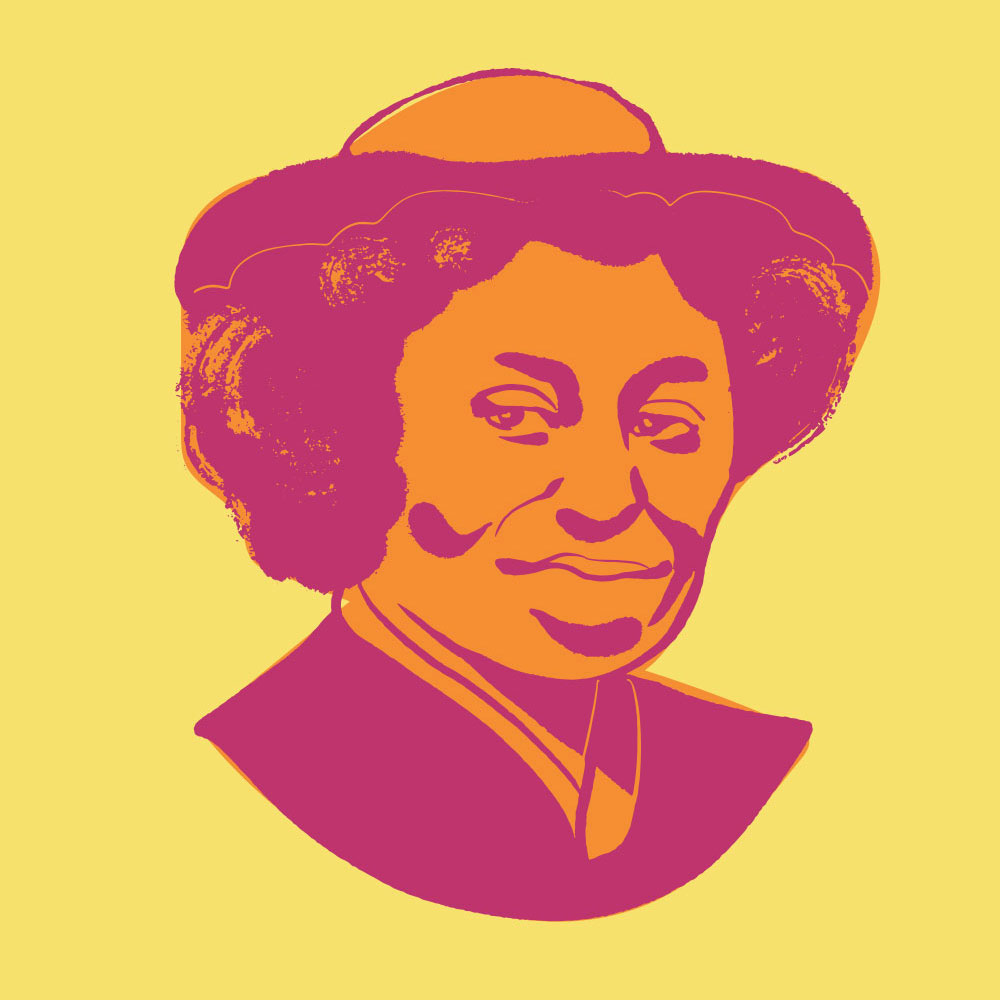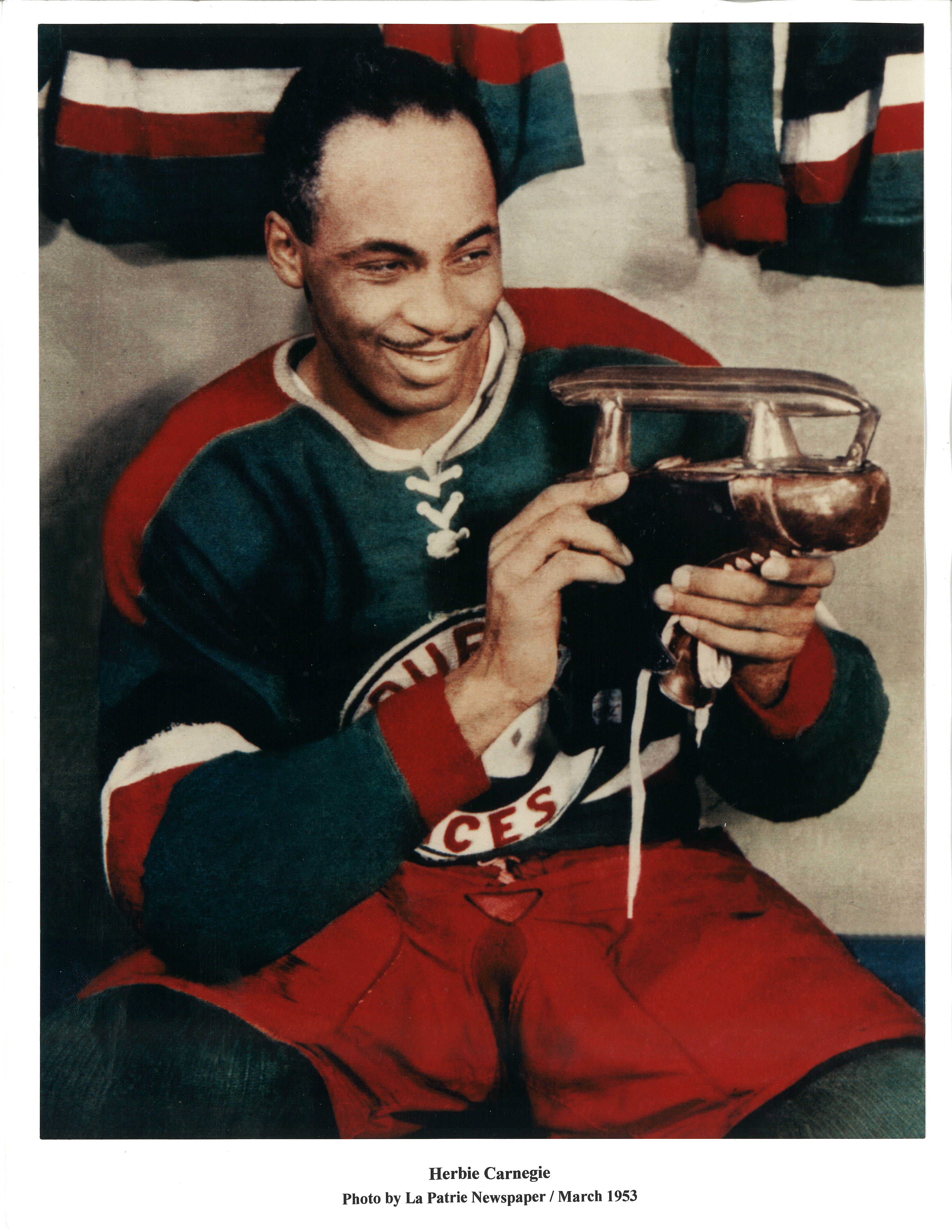Bernice Isobel Redmon, née Carnegie, nurse and health advocate (born 28 October 1917 in Toronto, ON; died 22 October 1993 in Toronto, ON). Trained in the U.S. when Canada did not allow Black students in nursing schools, Bernice Redmon was the first Black Canadian registered nurse and first Black nurse to work in public health in Canada.
This article was created in collaboration with Museum of Toronto.

Childhood and Education
Bernice Redmon was born Bernice Carnegie to Jamaican-born parents, George and Adina Carnegie. They had immigrated to Canada and settled in downtown Toronto in 1912. Bernice was the fourth of their seven children; one of her brothers was hockey player Herb Carnegie. Her father, George Carnegie, was a janitor with Toronto Hydro and also a successful businessman who acquired properties in Canada and the U.S. When Bernice was a toddler, her father moved the family to a rural home in North York. She reported fond memories of a childhood spent “picking strawberries … enjoying the outdoor life. Summertime playing with the boys and winter skating, playing hockey and sleigh riding.”
Bernice Carnegie showed an inclination toward nursing early in her life. According to a family anecdote, she first declared that she wanted to be a nurse at the age of eight, after a short stay at Toronto’s Hospital for Sick Children. She also enjoyed taking care of her younger brother and sick pets.
Carnegie attended Earl Haig Collegiate (now Earl Haig Secondary School) in North York, where she and her siblings were the first Black students. She was a good student, dedicated and studious. She also displayed considerable musical talent; in addition to singing in the church choir, she played violin and organ. For her last two years of high school, she attended Northern Vocational Secondary School in Toronto, where her brother Herb had been recruited to the hockey program.

Training in the U.S.
When, after graduation, Bernice Carnegie confirmed her decision to become a nurse, she was barred from pursuing this training or career in Canada. Nursing schools did not accept Black students, and hospitals would not employ them. This restriction would not end until the late 1940s.
The minister at the family’s church, an American, suggested that Carnegie apply to schools in the U.S. In 1941, she was admitted to St. Philip School of Nursing, the all-Black (segregated) nursing school associated with the Medical College of Virginia (MCV) in Richmond. While this was a desirable opportunity unavailable in Canada, segregation and racism were everyday challenges. On campus, the training equipment was often inferior to that of the white MCV students; off-campus, Carnegie faced racial discrimination in stores and other public venues.
In 1944, Carnegie completed the three-year course with above-average grades and was accredited a registered nurse in Virginia. The school offered her a scholarship to pursue an additional graduate degree in Public Health. Issues arose when the National Selective Service called all Canadian nurses home to help the war, and Carnegie’s visa extension was initially rejected. Personal intervention by the dean of nurses resolved the situation, and Carnegie stayed in Richmond for another year and received her diploma in Public Health Nursing in 1945.
First Black Registered Nurse in Canada
In the summer of 1944, Bernice Carnegie married fellow Canadian Nathan Redmon, an inventive engineer who, among other innovations, introduced the split-level home to the Toronto area. Nathan Redmon had enlisted in the army and was stationed in Sydney, Nova Scotia. Eager to end their separation after her graduation, Bernice Redmon looked for employment in Canada, which entailed having her American credentials accredited. On 23 June 1945, she was registered in the Ontario Department of Health, the first documented Black registered nurse in Canada.
First Black Nurse in Public Health in Canada
Despite her credentials, however, securing a job in Sydney proved difficult. In a 1984 interview, Redmon recalls how the Nova Scotia Department of Health attempted to discourage her after she applied for a position:
It wasn’t that they did not need nurses; it was the fact that they had never had a Black nurse before. It was just difficult accepting me. I went to see the medical officer of health, who told me they needed nurses, but he would have to get his advice on whether to hire me from … head office, and told me to come back the following week. I went back; he hadn’t heard from [head office]. And he told me to come back again the second week, and I went back, and [he] told me to come back again the third time … I just decided he was giving me the run-around.
Redmon eventually hired a lawyer, convinced the department to acknowledge her credentials and received an appointment. She was the first Black nurse in Canada to work in public health.
With the Nova Scotia Department of Public Health, Redmon served a community of people of colour working in Sydney’s steel mills. Her tasks included the full range of public health nursing in clinics and schools: immunizations, pre- and postnatal care, follow-ups after surgeries, etc. While she enjoyed the work, she had to reconsider the course of her career after just a few months, when her husband was discharged from the army and returned to Ontario. Redmon stayed in Sydney to complete a full year of work so she would be eligible for references.
Victorian Order of Nurses
In 1946, Bernice Redmon rejoined her husband in North York, where they settled in the neighbourhood in which she had grown up. She applied for employment with the Victorian Order of Nurses (VON), a nationwide homecare charity organization. Initially, she was met with similar reservations as in Nova Scotia, but after two months, the branch director decided to hire her without consulting with the national board. Redmon became the first Black woman to be appointed to the VON.
Until 1968, she worked with the VON in various positions, rising to senior nurse and temporary acting director of the local branch. Throughout this time she often experienced racial prejudice from patients but also appreciation of her competence. She recalls, for instance, how a patient’s wife was biased against her at first — but when the wife herself needed help at a later time, she specifically requested Redmon as her nurse.
Later Work and Community Involvement
Bernice Redmon was a lifelong learner. She regularly updated and expanded her expertise by taking courses at the University of Toronto and Toronto General Hospital. This included studies in psychiatry, followed by a short stint (her last) in the psychiatric ward of Humber Hospital in 1974.
In addition, Redmon was committed to community and volunteer work. She was involved with various organizations helping the sick and disadvantaged in the community such as the Eureka Friendly Club, one of the oldest Black women’s organizations in Ontario. During the 1950s, she served on the executive of the Women’s Section in the Toronto branch of the United Nations Association for Canada, and in the 1960s she worked with the Children’s Aid Society, supporting single mothers. She also taught Sunday school and was active in various choirs over the years.
During the last two decades of her life, Redmon traveled extensively with her husband. They took trips around North America and Europe, to Africa, the West Indies and Southeast Asia. On 22 October 1993, a week before her 76th birthday, Redmon died of cancer in Toronto. She was survived by her husband and their son, Nathan.
Legacy
Bernice Redmon was a trailblazer as the first Black Canadian to become a registered nurse. In a profession that defined itself through whiteness and Victorian ideals of womanhood, she overcame the implicit barriers that excluded Black people, paving the way toward more visibility and racial equality. Not long after she started her career, in 1948, the first two Black nurses in Canada, Ruth Bailey and Gwennyth Barton, graduated. The determination and perseverance of all three women were an impetus for institutional change.
Looking back on her career, Redmon pragmatically said, “My life has been difficult but on the whole life is not easy if you are going to make a success … And some of the things that have been difficult, I have learned not to become bitter by them but to work the situations out.”
Sources
The main source for Bernice Redmond’s life is a history compiled by her niece, Bernice Yvonne Carnegie. In 2019, Carnegie updated her father’s memoir, A Fly in a Pail of Milk: The Herb Carnegie Story, which includes a chapter about her aunt. Redmon was also interviewed by Lorraine Hubbard for the Ontario Black History Society in May 1984.

 Share on Facebook
Share on Facebook Share on X
Share on X Share by Email
Share by Email Share on Google Classroom
Share on Google Classroom













